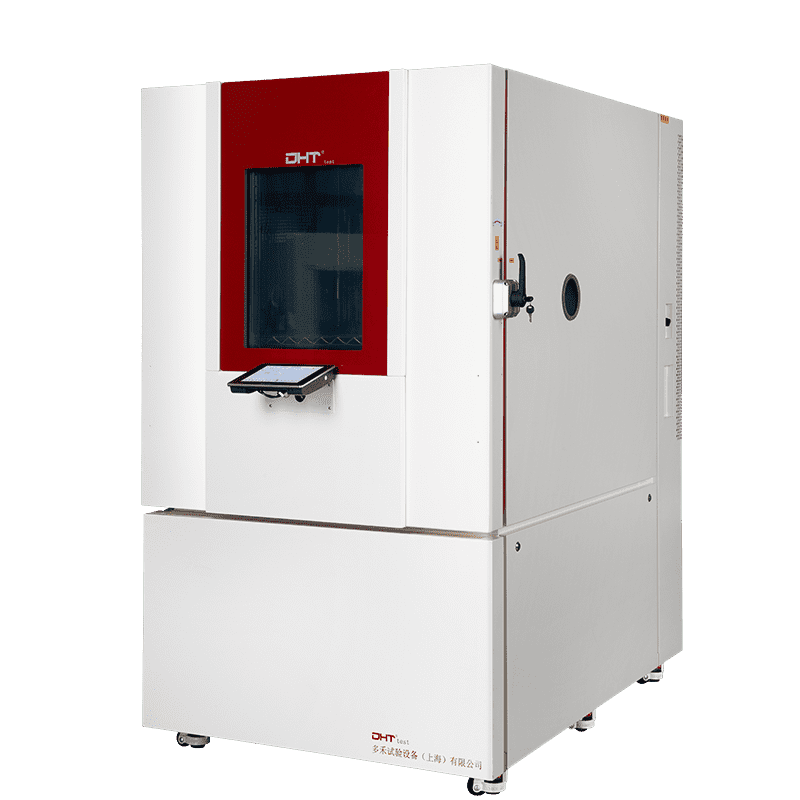Extreme Challenges for Aerospace Components
-
Drastic temperature fluctuations: A commercial aircraft climbing from ground level to cruising altitude may experience temperatures dropping from 40℃ to below -50℃. Spacecraft face even harsher extremes—exceeding +100℃ in direct sunlight and plummeting to -100℃ or lower in Earth’s shadow.
-
Complex humidity conditions: As aircraft move through different atmospheric layers, humidity levels shift rapidly. High humidity can cause condensation on electronic circuits, leading to corrosion or short-circuits.
-
Long-term operational stress: Satellites and space probes must operate reliably for years, sometimes decades. Repeated temperature and humidity cycles can cause materials to expand and contract, accelerating aging and performance degradation.
The Role of Temperature and Humidity Chambers in Environmental Validation
-
Wide range and high precision: Temperature range from -70℃ to +180℃, with humidity deviation controlled within ±2% RH, ensuring highly realistic and accurate test conditions.
-
Rapid temperature change rates: Powerful heating and cooling systems enable changes of up to 5℃ per minute, replicating the instantaneous shocks experienced during rocket launches or atmospheric reentry.
-
Uniform and stable environment: Internal temperature and humidity distribution deviations are kept within ±1℃, ensuring consistency and repeatability of test results.
-
Compliance with international standards: Fully aligned with MIL-STD, IEC, and other aerospace testing protocols, suitable for validating electronic components, composite materials, and power batteries.
Typical Application Scenarios
-
Electronic control system validation Flight control computers, radar, and navigation modules are highly sensitive to rapid environmental changes. Temperature and humidity chambers help engineers identify micro-cracks in solder joints or chip packaging caused by thermal expansion and contraction.
-
Material and structural testing Composite materials and lightweight alloys, though strong, are prone to fatigue under prolonged temperature and humidity cycles. Long-term testing allows engineers to predict material stability across its service life.
-
Power and battery system verification In high-altitude and orbital missions, batteries must deliver stable output under extreme conditions. Chambers enable cold-start testing, high-temperature endurance, and high-humidity durability testing to ensure safe and reliable energy supply.
-
Launch and reentry simulation During rocket launches and atmospheric reentry, components are exposed to violent thermal shocks. Temperature and humidity chambers simulate these scenarios in advance, helping engineers validate a component’s resilience before flight.
Conclusion: The Invisible Guardian
FAQ
Q: Why are temperature and humidity chambers critical in aerospace testing?
A: Aerospace components face drastic temperature fluctuations, rapid humidity changes, and long-term operational stress. Temperature and humidity chambers simulate these extreme conditions in a controlled and repeatable way, helping engineers validate reliability before real-world deployment.
Q: What types of aerospace components are tested in temperature and humidity chambers?
A: Typical applications include electronic control systems, composite materials, batteries, and structural parts. These tests help identify weaknesses such as solder joint cracks, material fatigue, or battery instability under extreme environmental stress.
Q: How do modern temperature and humidity chambers ensure accurate aerospace validation?
A: Advanced chambers provide wide temperature ranges (-70℃ to +180℃), precise humidity control (±2% RH), rapid change rates, and compliance with international aerospace standards. This ensures realistic testing conditions and consistent, repeatable results.


